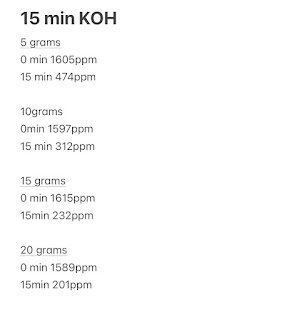Ingrid-Weekly Reflection #1
Weekly Reflection of Ingrid Wu
May 14 2023
Climate change poses a considerable challenge to humanity in the present era, and the increased release of carbon dioxide plays a major role in this issue. The consequences of global warming, such as higher sea levels, urban heat islands, and the decline of wildlife, serve as evident indicators of its impact. Evidence has accumulated over the past few decades, highlighting the harmful effects of excessive carbon dioxide emissions on our planet. Unfortunately, due to our heavy dependence on industrialization and fossil fuels, carbon dioxide concentrations in the atmosphere continue to escalate at an alarming pace. To counteract carbon emissions and prevent further harm to the Earth, various measures have been suggested, including afforestation, reducing private vehicle usage, and mineralization. However, these solutions often demand substantial financial or time commitments while yielding limited results. Consequently, for my senior project, I opted to explore potential enhancements to the mineralization process to expedite its effectiveness in reducing carbon emissions.
To test the effectiveness of different chemicals for carbon capture, I chose to work with Calcium Hydroxide (Ca(OH)2). Since reactants are typically most effective when they have a larger surface area, my mentor Josh and I designed a machine that would allow air to pass through a mist of Ca(OH)2 for maximum exposure, shown in the graph below. Our original plan involved using a mister to create the mist and a fan to pump air through the tube, but we quickly encountered several obstacles during the building process. For instance, we struggled to find a suitable mister nozzle and air pump that could generate enough pressure to pump the water through the tube as mists. Additionally, finding the right kind of transparent acrylic tubes proved challenging. Despite our efforts, we were unable to find tubes that were both the right size and within our budget. As a result, we decided to pivot our approach to ensure that we could continue our testing without further delays.
To increase the exposure of the air to the Ca(OH)2 solution and simplify our process, we decided to pump the air into the solution rather than the other way around. Using a simple air pump, we drew air from the closed area into the solution to maximize the contact between the air and the solution. The initial results were impressive; five grams of Ca(OH)2 dropped the initial CO2 level from 1157ppm to 218ppm in only 30 minutes.
I also increased the diversity of my test by including the KOH into my test trials. Potassium Hydroxide (KOH) is also a strong base as Ca(OH)2, but different from Ca(OH)2, KOH is soluble to water. This part of the characteristic will solve the problem that I encountered yesterday. Ca(OH)2 always precipitates at the bottom of my container, which may affect its effectiveness in my study. When KOH can be fully dissolved in water, I will not need to worry about whether the solution will be fully performed in the sequestration process. Also, from my research I learned that KOH is more easy to handle, as it will not cause breath irritation as long as proper protection is used. Unlike Ca(OH)2, the solution may form a film that is hard to remove on hand or in the container.
The effectiveness of KOH is quite remarkable, as evidenced by the significant impact it had in a short span of time. By using just five grams of KOH, the initial CO2 level of 1683 ppm dropped to 623 ppm within a mere 10 minutes. This test result indicates that the chemicals are successful in accelerating the CSS process. To further investigate and expand our understanding, I plan to conduct additional tests exploring various aspects, such as examining the exponential relationship between KOH and CO2 reduction and determining the maximum amount of KOH required to achieve a decrease in CO2 levels.





Comments
Post a Comment